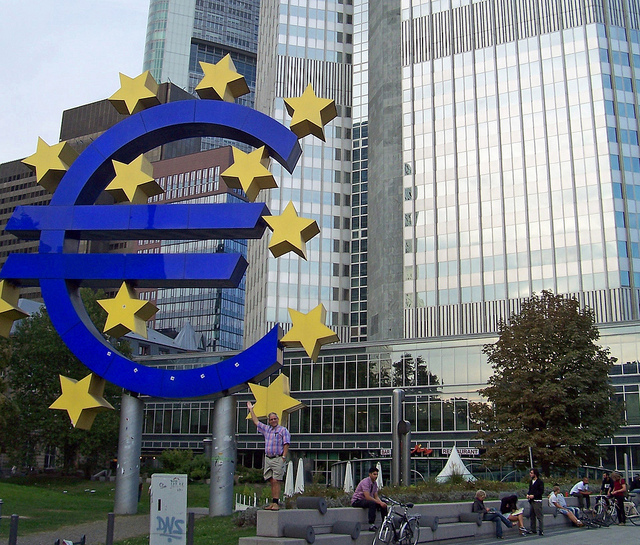Kommer van Trigt is responsable of fixed income investing at Robeco. In this interview with Funds Society, he explains his view about where to find value in the asset class this year.
After the ECB´s QE, have your investment perspective for European fixed equity changed or improved? What assets do you think should benefit from the QE? Will it serve equally to peripheral debt core to the peripheral or corporative?
Our key take away when the ECB announced it will engage in government bond purchases, was that the bank made clear it will buy securities with a maturity up to thirty years. This was not expected and is a big support for the longer end of the market. Both long dated securities in core and peripheral government debt markets will benefit. A significant part of our exposure in European bonds is concentrated in long dated bonds. Also from a valuation perspective this makes sense. Take German government bonds: securities with a maturity up to five years trade at negative yields.
In this sense, are you positive to peripheral countries debt, especially Spain? On what grounds, and to what extent, yields could be compresed?
We have exposure to Italian, Spanish, Irish and Portuguese government bonds. The ECB’s purchase program will continue to support these markets. We have shifted our exposure in these markets further out the curve. Exception being our holdings in Portugal where we invest in short dated bonds. Fair value assessments are difficult to make for these markets, but we envisage that the search for yield is here to stay. Central bank liquidity will find its way to these markets. A continuation of the liquidity driven rally is what we foresee. Obviously, improvements in the fundamental economic outlook will help this investment case. In this respect Ireland and Spain are clearly making most progress.
If the ECB´s QE leads to a higher inflation in the long term… Could it harm long-term assets, such as core government bonds?
In the end for sure. However for the upcoming period if anything there is a real risk that long term inflation expectations will remain low. The looming threat of deflation has been the reason in the first place why the ECB took the historical decision to go for QE. In the case of the US, you see how difficult it is to raise inflation expectations. The Fed initiated QE back in 2008 and 7 years later inflation expectations are still low and heading south.
One of the consequences of the ECB´s QE could be the depreciation of the euro. What do you think? Could it be a parity with the dollar?
In the long term that is possible. Back in 2002 the euro already traded below parity. Having said that, for the coming period we believe the euro depreciation will make a halt. It is quite a consensus position by now. Furthermore the ECB QE announcement is already behind us. Obviously a lot will depend on whether or not the Fed will make a start with normalizing its official target rate in the coming months.
The Fed is expected to meet. What do you expect to happen this year? Will there be a monetary normalization, or not?
The surprise would obviously be when they will stay on hold for the rest of the year. A June rate hike is more or less discounted by the market. The counter argument could be as follows: why would they act already with headline inflation nearing zero, long term inflation expectations well behaved, modest wage inflation, a significant US dollar strengthening and other central banks across the globe actually easing policy.
How the Fed will act towards the euro to dollar depreciation? Do you thin the FED would try to avoid it?
The effects of the strong US dollar on the US economy are already becoming clear. The net contribution of exports to fourth quarter growth was already negative. More and more companies are reporting headwinds related to the strong currency. The US economy is a relatively closed economy though, and other sectors can compensate for exports being somewhat under pressure. Up until now the US policy makers seem to be at ease with the exchange rate. As long as the overall US growth outlook remains constructive, they probably can live with it. Of course this is a key question: how will the US economy evolve in the coming quarters. Some weakness here and there is already visible. Stay tuned.
Which do you think will be the consequences of the Fed policies? With the ECB and the Bank of Japan being active, will there be a stability for market liquidityor may negative consequences be arising?
When Bernanke started talking about tapering, back in 2013, markets reacted sharply. Amongst others, emerging debt markets sold off heavily. Uncertainty about the consequences of a change in monetary policy, could be another reason why the FED might opt to wait a little longer to raise interest rates.
In the emerging world, many talk about a possible “monetary easing” in China, do you think that possible?
It is clear that economic growth is slowing in China. More stimulus measures are likely. A currency depreciation can be part that. However we believe the depreciation will be gradual. China is in the midst of transforming it economy. Less export led, more driven by domestic demand. A sharp currency depreciation would go against that strategy.
Is it attractive the emerging market debt? Or is not yet the time?
Yield levels look appealing. The average yield on emerging local debt is close to 6%. Compare that with 0.40% on German 10-year government bonds. However, that yield is only attainable when you leave open the currency exposure. Most emerging currencies are still under pressure. This can continue. The fundamental economic outlook for most of the countries in the universe doesn’t look promising either. On top of that lack of reform appetite in many countries and looming rating downgrades, also refrain us from re-entering these markets right now.
In the current global context, do you prefer “duration” or “credit” risk?
In October last year, we increased our duration risk following the dramatic decline in energy prices. The subsequent drop in long term inflation expectations as well as additional central bank easing across the globe, did indeed result in lower yields and positive bond returns. Over Summer we did cut back on our exposure in global high yield based on our assessment that spread levels were close to fair value. In the months that followed US credit markets have struggled, party driven by the turbulence in the energy sector which represents a sizeable part of the whole US credit market. Instead we much rather prefer to invest in subordinated bonds issued by financial institutions. This is a more European credit category with much room for great investment returns. Banks are becoming more safer and transparent institutions which from the perspective of a bond investor is good news. Regulation and intensified oversight, play out here. Of course, issuer selection for this more risky fixed income category is very important.
Where do you see value for fixed income in the current low rates environment?
Next to peripheral government bonds, subordinate bonds issued by financials, we also favor Australian government bonds. We anticipated the recent rate cut by the Australian central bank. The Australian economy has come under some pressure after commodity prices have slumped. The sizeable mining sector will no longer be the growth engine for the country. A weaker currency to support other exports sectors is very welcome. Australian 10-year yields are close to 2.5%, a “high yielder” in today’s bond market! The creditworthiness of the country is unquestionable with dent to GDP as low as 33%!
What are your bets on currencies?
For a long time we have anticipated US dollar strength versus the euro, the Japanese yen and the Australian dollar. Recently we scaled back on these positions taking profit on some significant moves.



 By Fórmate a Fondo
By Fórmate a Fondo